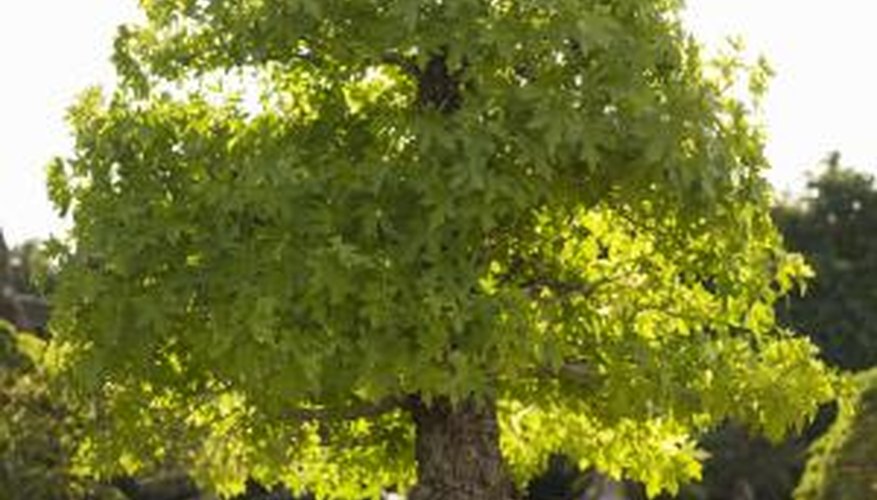The English oak is an upright, deciduous tree that can reach mature heights up to 140 feet with a spread of nearly 100 feet. As a bonsai, this tree can be raised in size from very small to quite large. To accommodate the desired size, the oak's container should have a depth that is approximately equivalent to the trunk's diameter with a width about 2/3 its height.
Prune your English oak bonsai during the early spring, just as the buds begins to swell. Remove the bonsai's damaged and wilted branches and stems with sharp, sterile pruning shears. Make flush cuts to promote rapid healing.
Trim back the tree's vigorously growing branches to develop and maintain its shape. Cut back unwanted branches and stems. Remove water sprouts by making flush cuts at the trunk.
- The English oak is an upright, deciduous tree that can reach mature heights up to 140 feet with a spread of nearly 100 feet.
- Trim back the tree's vigorously growing branches to develop and maintain its shape.
Prune the bonsai's interior branches and stems to increase air circulation and light penetration throughout the bonsai. This will also reduce the oak's potential for fungal diseases, such as powdery mildew and oak wilt.
Pinch out vigorously growing buds from the top of the bonsai to promote increased growth towards the bottom of the canopy. Use sharp, sterile tweezers or your thumb and forefinger to complete the pinching process. Skip the pinching process if the tree's canopy is balanced and growing as desired.
Prune the bonsai periodically throughout the growing season, thinning the bonsai's interior branches, removing sprouts and trimming back branches as needed to maintain its shape and health.
Repot the bonsai about every three years, or sooner to prevent the oak from becoming root-bound in its container. Complete the repotting in the early spring, just as the buds begin to swell. Complete any scheduled pruning cuts just before repotting.
- Prune the bonsai's interior branches and stems to increase air circulation and light penetration throughout the bonsai.
- Repot the bonsai about every three years, or sooner to prevent the oak from becoming root-bound in its container.
Create a loamy soil for use during the repotting process. Incorporate equal amounts of nutrient-rich potting soil, organic compost and clean, fine sand. Mix thoroughly to ensure a well-drained and balanced environment.
- Create a loamy soil for use during the repotting process.
Remove the oak bonsai from its container. Reduce the root mass of the root bound oak bonsai by combing it gently with a sterile root hook. Remove about a third of the mass from the system. Crumble any excess soil gently from the roots and inspect the system closely.
Trim away any damaged roots with your sharp, sterile shears. Cut dead, wilted and diseased roots all the way back to the root mass. Trim the ends of the entire root system, removing no more than a third of the root length.
Line each of the bonsai container's drainage holes with wire mesh to keep the soil and roots from exiting the container. Fill the bottom third of the container with your soil mixture and place your English oak bonsai in the centre. Fill the container the rest of the way with soil while pressing the soil gently around the oak's base to secure its upright position.
- Trim away any damaged roots with your sharp, sterile shears.
- Line each of the bonsai container's drainage holes with wire mesh to keep the soil and roots from exiting the container.
Irrigate the newly pruned and repotted oak bonsai with tepid water. Pour the water evenly across the surface until the excess water runs from the drainage holes.
